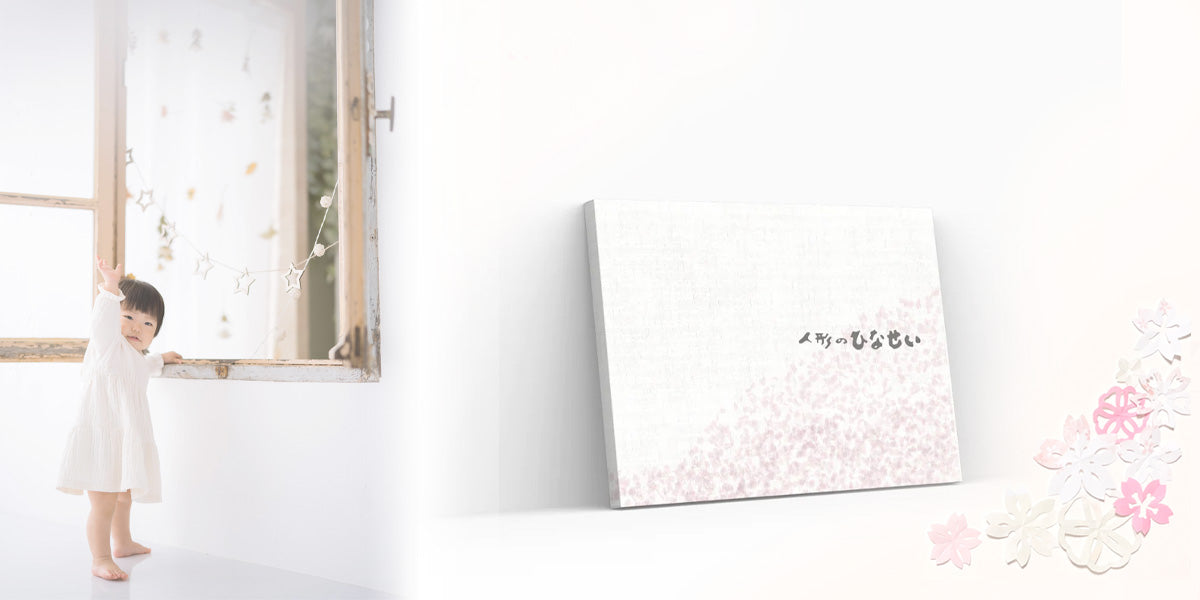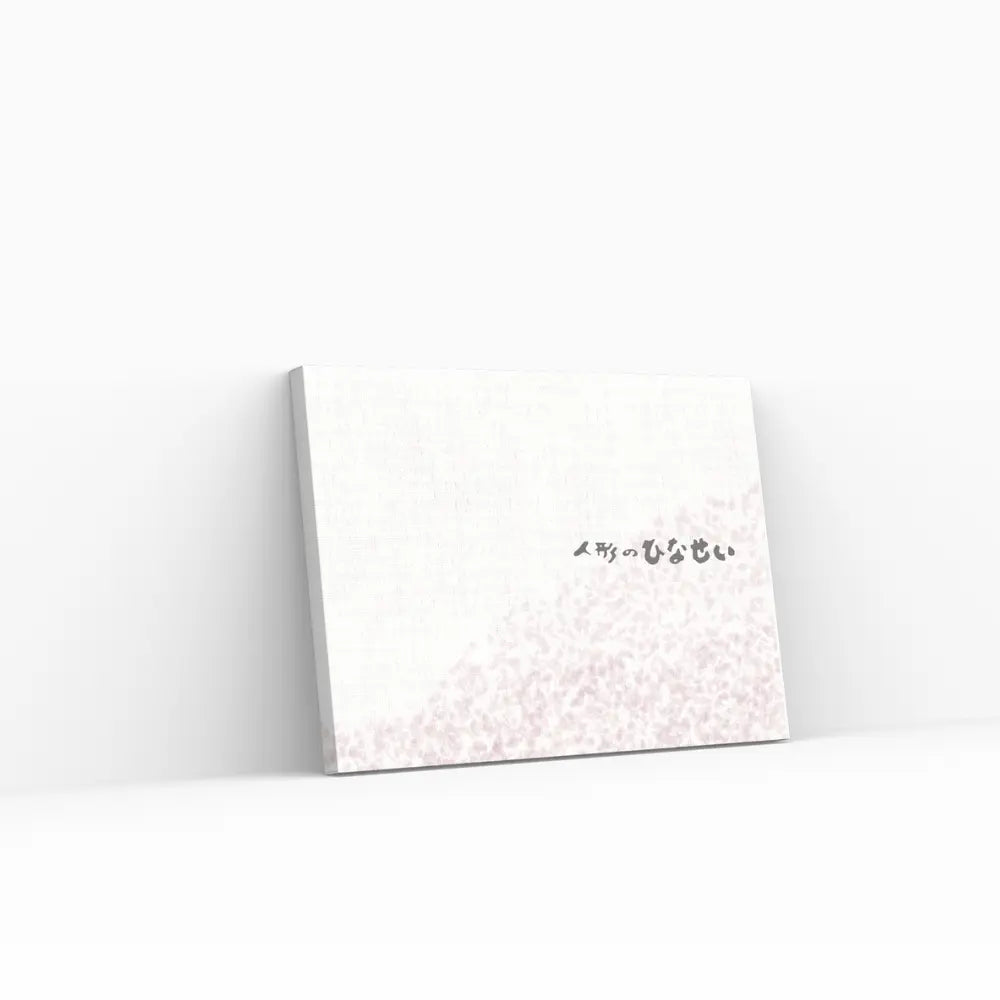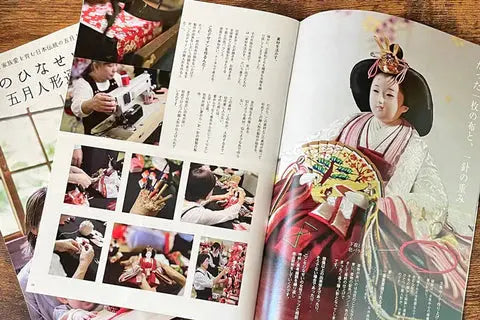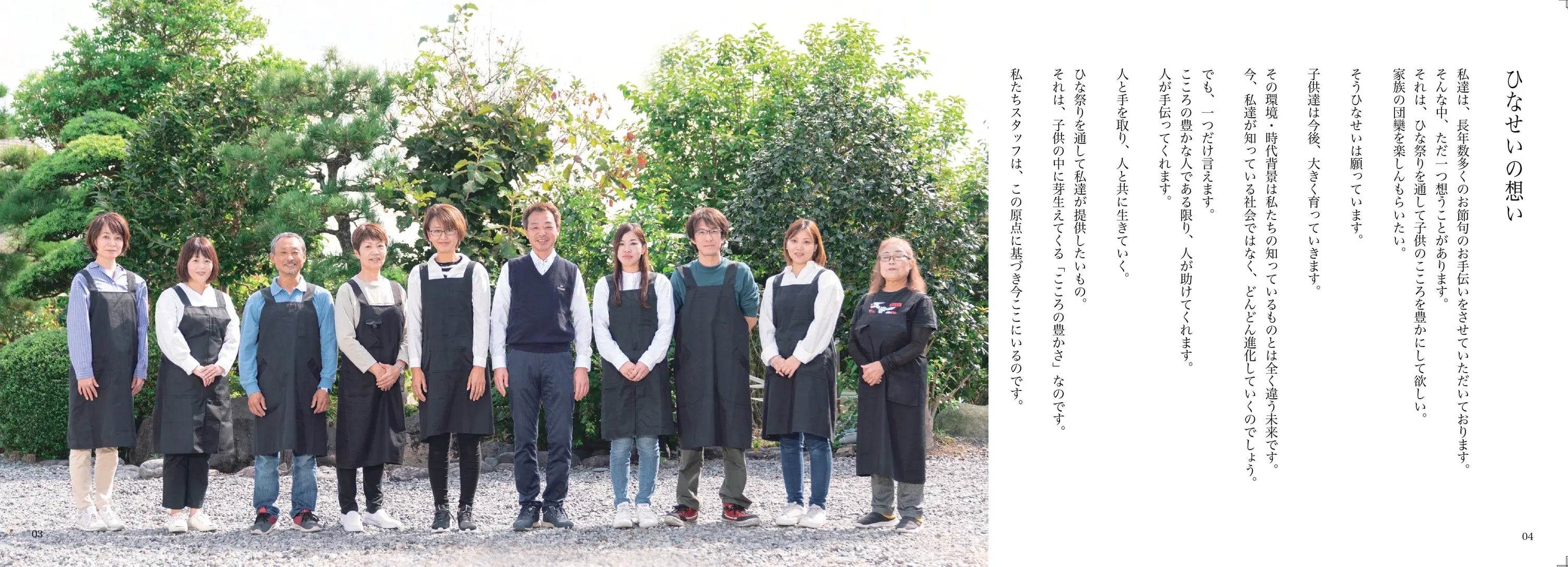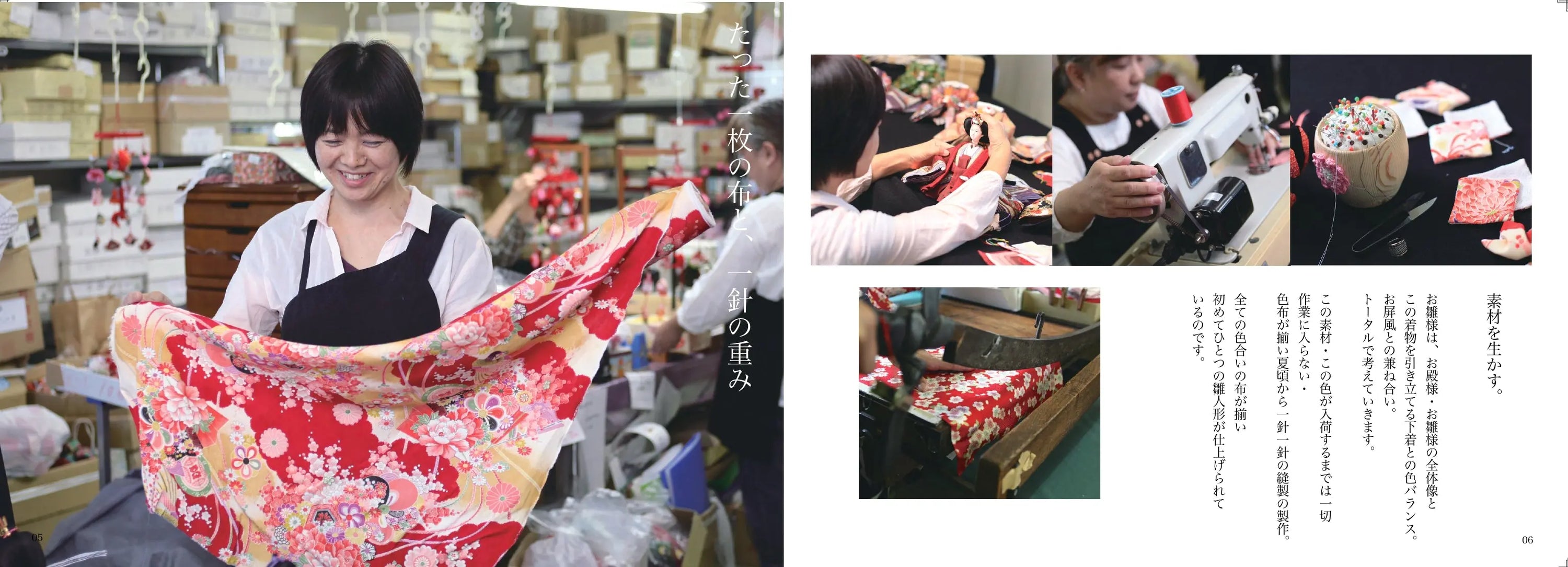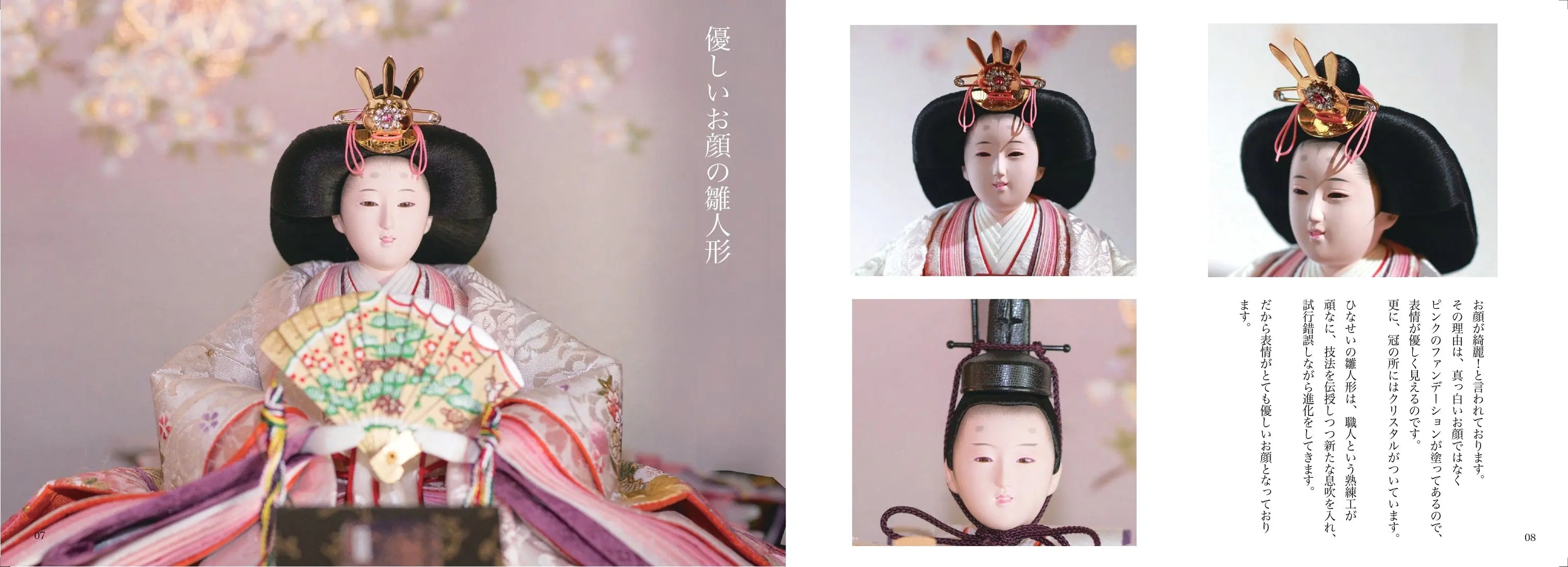The meaning, origin, role, duties and thoughts behind Hina dolls
Hina dolls for Hinamatsuri.
These Hina dolls have various meanings and roles that are imbued with various thoughts.
I would like to introduce the origins of this from history.
I hope this is helpful
---- table of contents ----
Click below to jump

1. [Complete Guide] The Origin and History of Hina Dolls: From the Heian Period to the Present
The history of Hina dolls is deeply connected to traditional Japanese culture.
The culture of Hina dolls is said to have begun in the Heian period .
It became popular among the aristocratic society of the time as a way to pray for the healthy growth of children.
Early Hina dolls were made of paper,
They were used in a ritual called "Nagashibina," in which they were floated down a river to ward off evil spirits.
This is said to be the origin of Hina dolls.
As time goes on,
Hina dolls gradually evolved into more luxurious and elaborate items.
During the Edo period, Hina dolls made of cloth and wood appeared in the style we know today .
It has become widely used as a decoration in homes.
During this period, Hina dolls were treated as symbols of family happiness and health.
It was meant to express the hope that the girl would grow up healthy.
Modern Hina dolls have been made with new designs and arrangements while still maintaining tradition .
It is becoming more diverse.
Items with anime character motifs,
Modern, simple designs are also available.
The way we entertain ourselves at home is also changing.
However, the essential meaning of Hina dolls, which is to wish for the growth of children,
It is still treasured in many homes today.
2. [For beginners] The origin of Hina dolls and their deep connection with the Jōshi Festival
For Hina dolls and the Joshi Festival ,
There is a deep connection.
The Jōshi Festival is a custom that was introduced from ancient China.
In Japan, this has become established as "Girl's Festival," which is celebrated on March 3rd.
On this day, ceremonies for warding off evil spirits and purification are held.
The "Nagashi Hina" festival was held with prayers for the health of the family.
In the Heian period, aristocrats prayed for the health and happiness of their children,
It is on this day that Hina dolls are displayed.
This is the beginning of the custom of displaying Hina dolls today.
At that time, Hina dolls were simple and made of paper,
They played an important role in protecting children from harm.
As time passed, Hina dolls became more luxurious and beautiful.
It has come to have meaning as a symbol of wishes for the prosperity of the family and the growth of children.
Even today, the custom of displaying Hina dolls on March 3rd as part of Hinamatsuri is still practiced.
It continues in many homes,
It is an important opportunity to teach children about traditional Japanese culture.

3. [Evolution in the Edo Period] The origin and evolution of Hina dolls
During the Edo period, the culture of Hina dolls further developed.
In this era, Hina dolls were used to pray for the prosperity of the family and the health of children.
It has come to be recognized as an important entity.
In the early Edo period, Hina dolls became more luxurious and splendid.
It was especially popular among the upper classes.
In the homes of nobles and samurai, dolls were made in splendid costumes,
It was common to decorate them to pray for the growth and happiness of girls.
From the mid to late Edo period,
Hina dolls became even more diverse and spread among the common people.
During this period, the "Hinadan" (stage for displaying Hina dolls) also appeared.
The format of the tiered display was established.
Also, Hina dolls with regional characteristics began to be made in each region,
This led to the formation of a "Hina doll culture that spread throughout Japan."
Even today, the style and tradition of Hina dolls established during the Edo period remains
It is passed down in many households during the Doll's Festival.
In particular, the beauty of the Hina dolls lined up on the stage is
It has touched many people and is an opportunity to strengthen family bonds.
Through the evolution of the Edo period,
Hina dolls have become an indispensable part of Japanese culture,
It remains an important tradition that continues to this day.
4. [Complete explanation by type] Types and origins of Hina dolls
There are many different types of Hina dolls,
Each has a different meaning and origin.
The most representative example is the "Dairibina" dolls.
This symbolizes the Emperor and Empress and is displayed on the top tier of the stage.
The Dairi Hina dolls are a symbol of the prosperity of the family and the happiness of children.
It is treasured in many households.
Next, "Three Court Ladies" and
This is followed by "Goninbayashi."
The three ladies-in-waiting represent the maids who serve the Empress and are placed in the center of the stage.
Goninbayashi is a band with instruments such as drums and flutes.
It plays a role in livening up the celebration.
These dolls reflect the ancient court culture.
It is characterized by its gorgeous and beautiful decorations.
Also, there are words such as "Zuijin" (attendant) and "Shicho" (servant) ,
Dolls representing attendants and chamberlains also play an important role.
These dolls symbolize the role of protecting and supporting the Imperial family.
It is meant to pray for peace and safety for the family.
The attendants are the Minister of the Right and the Minister of the Left, who hold bows and arrows and are considered to be symbols of protecting the family.
The purpose is to pray for the health and good fortune of the whole family .

5. [Must-see for parents] The wishes and origins of Hina dolls
Protecting family happiness and children's development
Hina dolls are a symbol of the healthy growth of girls.
It was created to wish for a happy marriage.
Traditional Hina dolls symbolize the Emperor and Empress
The main figures are the "Emperor (male doll)" and the "Princess (female doll)".
These dolls are meant to pray for the happiness and prosperity of the family.
By displaying Hina dolls, children grow up healthy,
It is filled with the hope that you will have a wonderful life in the future.
Hina dolls also have the meaning of warding off evil spirits.
Since ancient times, Hina dolls have been used to take on evil spirits.
It is believed to protect children.
In particular, the Hina dolls that are displayed during the Girls' Festival
As a symbol of warding off evil spirits at the change of seasons,
It plays an important role in the household.
In this way,
"Hina dolls are filled with wishes for family happiness and the protection of children's growth."
Furthermore, displaying Hina dolls strengthens family ties,
You can pass on the traditions passed down from your ancestors to the next generation.
In particular, the colors and designs of Hina dolls reflect the Japanese sense of the seasons.
As a sign of the arrival of spring,
The whole family can enjoy it together.
Through these experiences,
"Children become aware of themselves as part of the family,
It can boost self-esteem .
6. [Family Fun] Learn the origins of Hina dolls and deepen your bond
Traditional decoration
Displaying Hina dolls as a family is not just for decoration.
It is a way to share Japanese traditions with the whole family,
It's an important opportunity to deepen bonds.
Each Hina doll has its own meaning and origin,
The rules and etiquette for decorating are also important.
By decorating the Hina dolls together as a family,
"Children can learn about Japanese culture and traditions in a natural way,"
It also promotes communication within the home.
For example, the position and order in which the Hina dolls are displayed each have their own meaning.
By placing the Emperor and Empress dolls on the top tier and the three court ladies and five musicians underneath,
I pray for the prosperity and health of my family.
The tools and accessories that accompany the Hina dolls also have deep meanings.
By explaining it to the children while decorating,
You can pass on family traditions to the next generation .
Nowadays, the ways of decorating Hina dolls have become more diverse.
In addition to traditional decorations, we also offer arrangements that suit modern interiors.
Compact Hina dolls that can be displayed in a small space are also popular.
By creating an "original Hinamatsuri" while having fun with the whole family,
You can share special moments that your children will remember forever.
This strengthens the bonds between family members,
It will improve communication within the home.

7. [Effect of warding off evil spirits] The origin and scientific background of Hina dolls' talismans
Hina dolls are said to have the power to ward off evil and misfortune.
The origin of this tradition dates back to the Heian period.
At that time, people would pray to protect their children from illness and disasters.
They held a ritual called "Nagashibina" in which paper dolls were floated down the river to ward off evil spirits.
This custom took shape as Hina dolls,
It has been passed down to the present day.
It is believed that Hina dolls have the power to ward off evil spirits and protect the health and happiness of the family .
It is now displayed during the Girls' Festival.
In particular, Hinamatsuri on March 3rd is held in spring, when the seasons change.
This is also a time when illnesses are more likely to spread, so by decorating the dolls together as a family,
It is meant to protect children from illness and pray for their healthy growth.
The gorgeous colors and intricate decorations of Hina dolls are also
It is said to have the power to ward off evil spirits.
Even today, Hina dolls are considered a symbol of protection for the family, warding off evil spirits .
The tradition is cherished.
From a scientific point of view, these traditional rituals and behaviors are
It is believed to contribute to the family's sense of security and mental health.
By displaying Hina dolls, the whole family can spend time together,
By deepening communication,
It is said to reduce stress and maintain harmony within the home.
"The effect of Hina dolls to ward off evil spirits is not simply an old superstition,
It plays an important role in the modern home."
8. [Explanation of all parts] Hina doll parts
A thorough explanation of its meaning and role
Hina dolls are not only gorgeous,
Each part and component has a deep meaning.
The "Dairi Hina" dolls displayed on the top tier symbolize the Emperor and Empress,
It represents a wish for peace and prosperity in the home.
"The Emperor and Empress dolls are the center of the family,
It symbolizes the healthy growth of children."
In addition, displaying Hina dolls strengthens family ties,
You can feel the history and traditions of Japan.
Next, the "Three Court Ladies" and "Five Musicians" are arranged.
The three ladies-in-waiting represent the maids who serve the Empress.
It symbolizes the role of helping with important ceremonies such as weddings.
Goninbayashi is a band that plays instruments such as drums and flutes to liven up celebrations.
"These dolls brighten up celebrations,
It is said to bring good fortune to the home .
In addition, there are dolls representing attendants and menial workers such as "tsuishin" and "shicho."
It plays an important role.
These dolls play a role in protecting and supporting the Imperial family.
It is meant to pray for the safety and prosperity of the family.
The attendants are the Minister of the Right and the Minister of the Left, who hold bows and arrows and are considered to be symbols of protecting the family.
The purpose is to pray for the health and good fortune of the whole family .
These parts and components are not just decorations,
The entire Hina doll collection is a symbol of wishes for family happiness.
By understanding the meaning behind each part and carefully decorating it,
"It will deepen family ties and pass on Japanese traditions to the next generation."
9. [Educational Effects] Hina dolls foster self-esteem
Its origins and influence on modern education
Hina dolls can help children develop a sense of self-esteem.
Self-esteem is accepting yourself,
It means having confidence in yourself.
This sense plays a very important role in children's development.
By displaying Hina dolls, children have the opportunity to come into contact with traditional Japanese culture.
"Hina dolls are an important tool for helping children develop a sense of self-esteem."
In particular, the preparation for Hinamatsuri and the experience of decorating the dolls are done by the whole family,
Children become aware of their role as part of the family.
Families spend more time together,
Children naturally begin to feel a sense of purpose in their own existence.
"Through the display of Hina dolls, children can feel that they are cherished,"
This is the foundation of self-esteem.
Also, because Hina dolls have beautiful designs and colors,
Visual stimulation enhances sensitivity.
While looking at the Hina dolls, the children can express their thoughts and
Expressing your feelings also helps develop communication skills.
"Displaying Hina dolls is not just a traditional event,
It plays an important educational role in children's development .
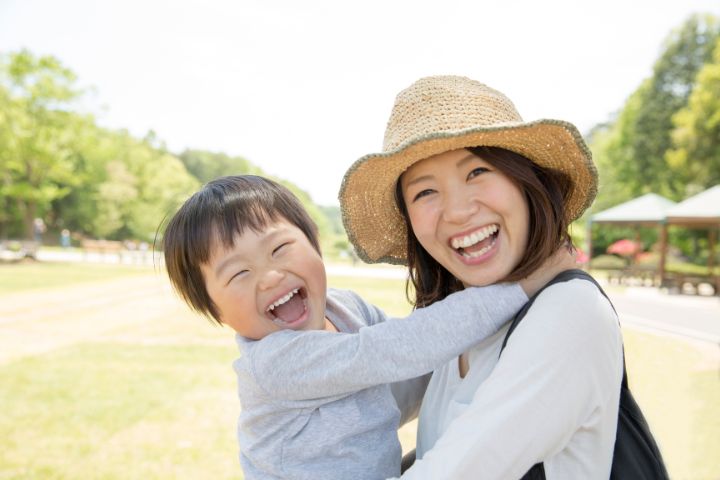
10. [Seasonal Symbol] Hina Dolls Heralding Spring
Origins and customs celebrating the change of seasons
Hina dolls are displayed on March 3rd, the Girls' Festival, as a symbol of the arrival of spring.
This is the time when winter ends in Japan,
This is an important time as a new season begins.
By displaying Hina dolls, the whole family can feel the arrival of spring,
Celebrating the beginning of a new year.
"Hina dolls are a symbol of the arrival of spring and the happiness it brings to families."
In particular, the pink and white colors used in Hina dolls are reminiscent of cherry blossoms and plum blossoms,
It gives you a feeling of spring in Japan.
These colors symbolize the end of winter and the birth of new life.
It will get the whole family excited about the arrival of spring.
Also, the peach blossoms that are placed on the Hina dolls are said to ward off evil spirits,
It is meant to pray for the health and prosperity of the family.
Furthermore, by gathering together as a family and sharing a meal during the Hinamatsuri period,
"It strengthens family bonds and makes the time we spend together even more special."
Hinamatsuri is not just an event to celebrate spring, but also an event to strengthen family ties,
It's an important opportunity to bring happiness to your home.
Through Hina dolls, you can feel the change of the four seasons in Japan,
The whole family can welcome the start of a new season.

11. [Learning History] Learn about Japanese history and origins through Hina dolls
Digging deeper into cultural background
Hina dolls are symbolic objects that reflect Japan's rich history and culture.
Through Hina dolls, we can learn about the history of Japanese culture from ancient times to the present day.
You can learn more about the cultural background of Japan.
For example, the most iconic Hina doll is the "Dairibina" doll.
It represents the Emperor and Empress and is associated with the traditions of the Japanese Imperial family.
In this way, displaying Hina dolls allows families to feel closer to Japanese history and traditions,
It plays an important role in passing it on to the next generation.
The history of Hina dolls can be traced back to the court culture of the Heian period,
It is clear that the influence of the samurai society of the Edo period is strongly reflected.
Especially during the Edo period, Hina dolls became popular among the common people.
Each region has its own unique style and traditions.
It can be said that Hina dolls are cultural assets that reflect the history and climate of various parts of Japan .
By learning about this historical background,
You will understand how important Hina dolls are to Japanese culture.
Each Hina doll has a different meaning,
It is treasured in many homes as a symbol of wishes for family happiness and prosperity.
How traditional Japanese values and beliefs are formed through Hina dolls,
You can find out how it has been passed down to the present day.
"Hina dolls are not just decorations,
As a valuable teaching material for learning about Japanese history and culture ,
It is loved by many people.

12. [Complete Guide]
A thorough explanation of the origin and role of Hina dolls:
A comprehensive summary of the history and significance of Hina dolls
Hina dolls are a representative of traditional Japanese culture.
Throughout its long history, it has come to have many meanings and roles.
As we have already mentioned, Hina dolls are a symbol of wishing for the growth and happiness of girls.
It is displayed to pray for the prosperity and health of the family.
It is also said to have the effect of warding off evil spirits and bad luck.
They are treasured in many homes as an important presence that protects the entire family.
The tradition of Hina dolls continues even today.
While new designs and modern interpretations are being added,
The underlying meaning remains the same.
"Hina dolls strengthen family ties,
It is an important cultural item for experiencing the four seasons of Japan .
Through the Hinamatsuri festival held every year on March 3rd,
The whole family gathers together to decorate the Hina dolls and celebrate the growth of children.
It has become an important event in Japanese families.
By learning about the history and origins of Hina dolls,
We can once again feel the depth of Japanese culture and values.
Also, passing on this tradition to the next generation
This leads to the inheritance and development of culture.
"Hina dolls teach us about Japanese history and
They are people who teach us the importance of family .
It will continue to be a favorite in many homes.
Looking for stylish and modern Hina dolls?



